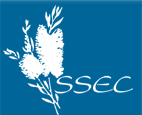
fact sheets
• port hacking vision
• opportunites
• managing hacking
• bonnievale ramp
• minimising nuisence
• stormwater mgnt
• marine heritage
• biodiveristy
• landscape controls
reports
• jetski issues
• cabbage tree basin
• dunecare report
|
Protecting Biodiversity |
The waters and shores of Port Hacking provide a diversity of habitats which support many plant and animal communities.
Port Hacking has:
- Rainforest;
- Wet and Dry woodland;
- Heath;
- Mangroves and saltmarsh;
- Vegetated dunes;
- Open sands and sand and mud flats;
- Seagrass beds;
- Sandy and rocky shoreline;
- Deep and shallow marine areas;
- Submarine cliffs and reefs;
- Freshwater creeks and permanent and ephemeral freshwater wetlands.
Plant and animal communities rely on this habitat diversity, and on high water quality in marine and freshwater systems.
Threats to habitat diversity come through;
- Clearing of natural areas for residential, recreational and commercial use;
- Poor sediment control, sewage overflows and polluted stormwater;
- Over-use of easily damaged areas, such as vegetated dunes;
- Damage to seagrass beds through mooring, inundation by sand mobilised by dredging, and higher than natural wave regimes created by large vessels.
- Impact from exotic animals, such as deer browsing native vegetation, promoting the spread of weeds, and churning areas of soft soil with hooves.
- Predation on native animals by cats, dogs and foxes;
- Frequent disturbance of sand bank and beach areas used by migratory birds as resting areas can cause birds to adandon these areas
- Loss of natural shoreline to infrastructure and housing.
As habitats become stressed, the diversity of plants and animals present diminishes.
Sadly, we lack baseline data to objectively measure the environmental impacts of past use, but anecdotal evidence suggests some extensive losses. We run the risk of continuing to lose biodiversity in incremental steps, unless we have objective measures. What is the PHPS position?
The natural systems of Port Hacking are inadequately understood, and lack well considered, adequate protection.
If we are to maintain the plant and animal communities of the Port we need to have a good understanding of how our activities impact on those communities. We need to give effect to Goverment policies on sustainability.
PHPS supports research by The National Parks and Wildlife Service and NSW Fisheries of our natural systems, and calls for knowledge gained to flow through to management regimes to protect those natural systems.
Currently much of the southern shoreline of Port Hacking has its natural systems safeguarded through its National Park status. We support the view that the first role of NPWS should be the protection of the natural systems under its management and within this framework recreational uses should be managed.
We propose that a similar precautionary approach should be afforded the waterway. A managed use of the waterway which protects natural habitat and the marine ecosystem is the key to making a reality of the rhetoric of sustainable use of Port Hacking.
Without careful protection of the marine ecosystem it is easy to envisage the continued loss of seagrass, a consequent reduction in number and variety of fish and other marine life, and flow on effect on shorebirds and other organisms which rely on marine life as a food source. It is also possible to envisage a less enjoyable recreational waterway for man.
PHPS calls on Sutherland Shire Council, NPWS, Waterways Authority, NSW Fisheries, the Department of Land and Water Conservation and other authorities whose decisions impact on Port Hacking to give full effect to the rhetoric of sustainability and the precautionary principle, in their management of Port Hacking. How can I find out more?
For more information on the policies and programs of PHPS or to join contact us on the address given below. For information on biodiversity see the following: |
| top of page |
|
| |
|



